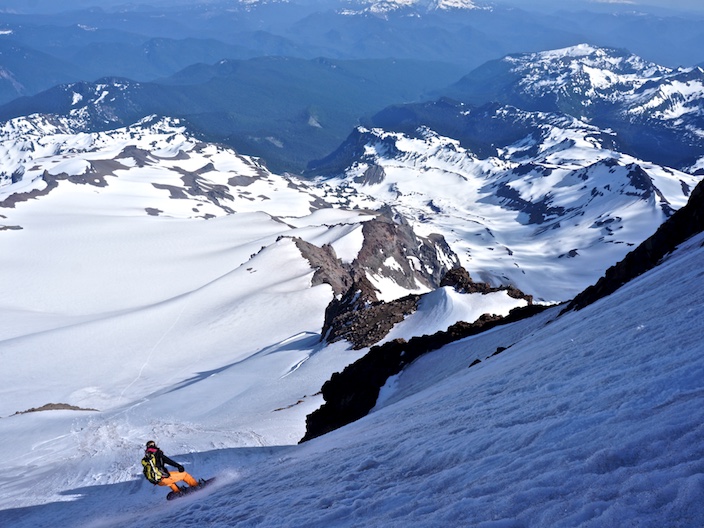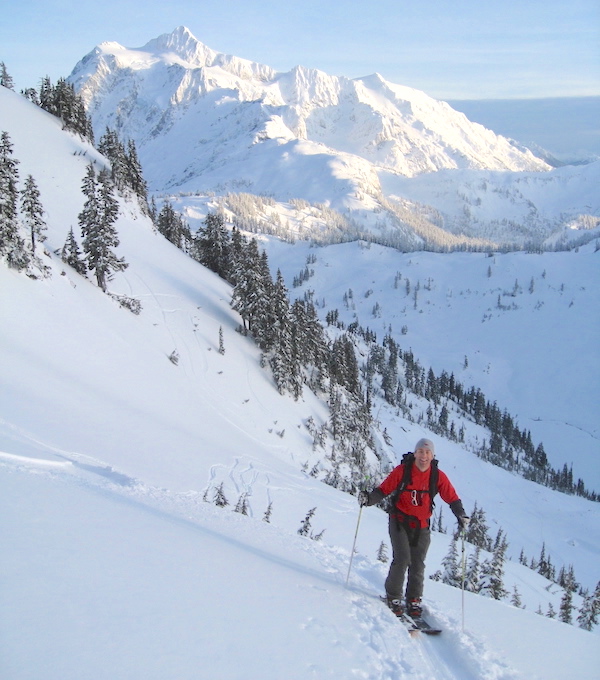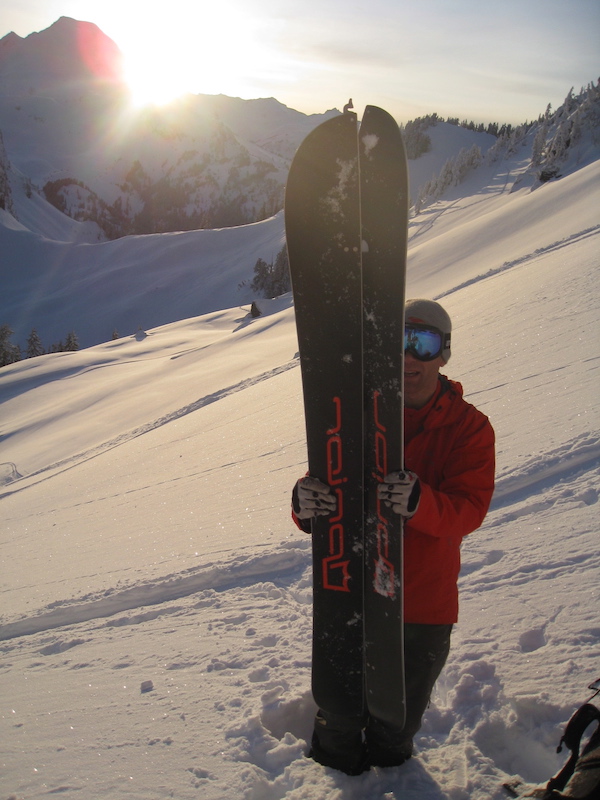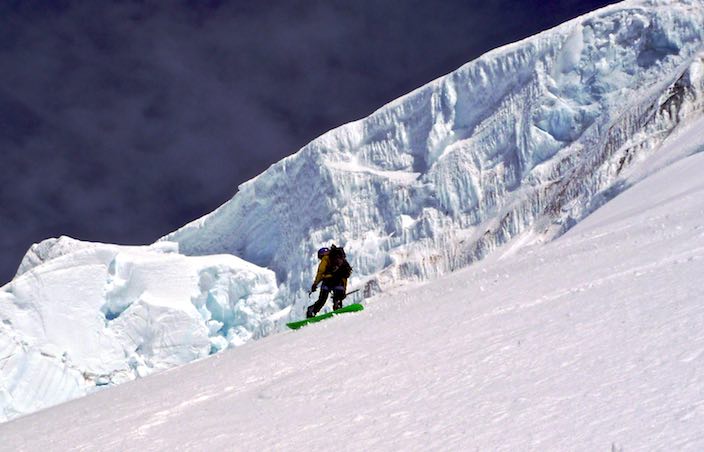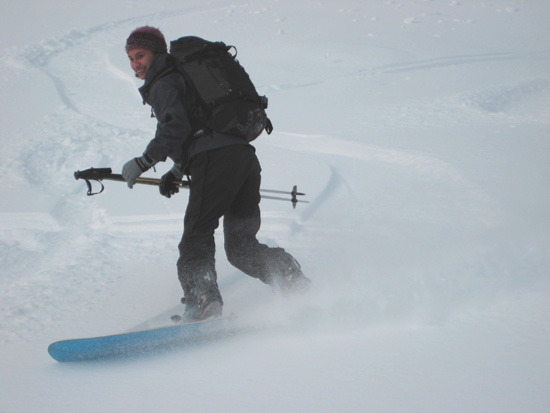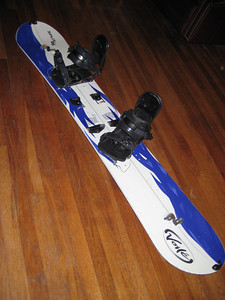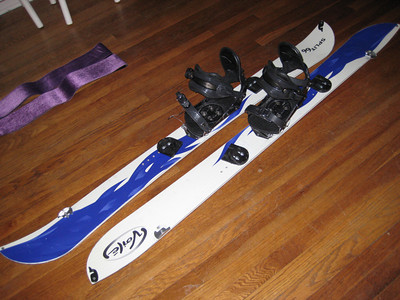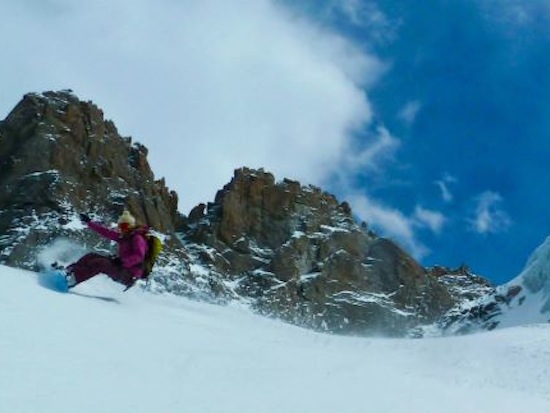Introduction to Splitboard Snowboarding
Overview
If you're a snowboarder yearning to hit the pristine, trackless backcountry, you have two options: carry snowshoes for the ascent, or ride a spltboard. For some, the added weight of snowshoes is a worthy compromise. But, increasingly, splitboarding is seen as the best solution by far, not just because of the weight savings, but because splitboarding affords you the performance of skis and climbing skins on rolling or cross-country terrain.
But splitboarding, like any backcountry skiing or riding, isn't totally straightforward; there are many small details to consider and decisions to make before launching into a splitboarding adventure. Do you buy a pre-made splitboard or cut your own backcountry board and use a kit? How do you manage transitions from uphill to downhill mode relative to other regular boarders or skiers in your group? What about avalanche safety?
Before you take the plunge, sign up for this introductory splitboarding course. Rent a splitboard setup and avy gear from our shop and try out splitboarding with an AAI guide. You'll learn in two days what it would take weeks of trial and error to pick up on your own, while heading straight into the best stashes of backcountry boarding terrain, tailored to your riding level. Then you can hit the backcountry on your own like a pro.
Skills covered include:
- Equipment Intro
- Properly and efficiently converting the board to skis and back
- Use of climbing skins for uphill movement
- Terrain selection for up tracks and down tracks
- Uphill switchbacking techniques and tips
- Efficiency
- Pole usage for snowboarders
- Packs, transceivers, shovels, probes, etc. equipment review.
- For a more intensive introduction to backcountry splitboarding and alpine climbing, check out our splitboard mountaineering course.
- Brief introduction to avalanche safety; we recommend a full 3-day avalanche safety course plus a 1-day avalanche rescue class for all backcountry riders.
How does the Splitboard work?
Using a splitboard kit, you can convert your favorite backcountry snowboard to a splitboard. The snowboard is cut in half down the middle, and a metal edge is built into the cut side to match the normal edges on the outside of the board. Snowboard bindings are mounted onto a plate that can either be locked into place in snowboard mode, or attached via a hinged pin in ski mode. When split apart, in touring mode, the two halves are used as free-heel skis to ski uphill, on the level, or even to handle short downhill sections. When in ski mode, climbing skins are applied to the bottoms of the boards, which provide grip for skiing uphill.
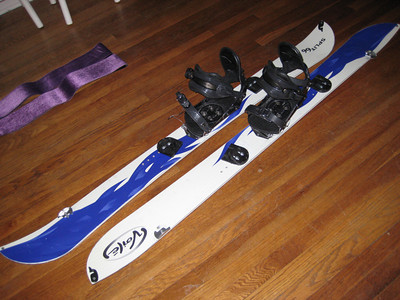
A splitboard configured for touring and uphill travel. Note the purple climbing skins on the left, which will be glued to the base of the boards for ascent. Andy Bourne
Climbing skins have a sticky side that attaches to the bottom of the skis, by means of glue that works well under light pressure, but can be removed from the bottom of the ski or board without leaving residue. The furry side of the skins has tiny hairs leaning in one direction. (The original climbing skins were made from seal pelts.) These hairs allow the ski to slide forward easily, but grip when the ski begins to slide backward, enabling it to climb uphill.
Splitboard rental packages are available from the American Alpine Institute Equipment Shop.
Introduction to Splitboard Snowboarding
Itinerary
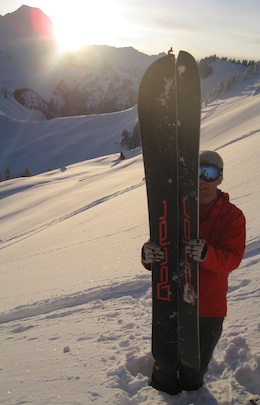
A splitboarder transitions to downhill mode to enjoy the fruits of his labor in the Mt. Baker backcountry. Andy Bourne
Day 1- Full day, 7am-4pm, Classes meet at the AAI Gear Shop in Bellingham, WA. We begin with a gear check and board fitting, including dissecting the splitboard to learn how it works. Much of the learning needed for being a good splitboarder is familiarity with the equipment. You can provide your own board or rent one from AAI.
After driving to the Mount Baker backcountry,
we spend the first part of our morning reviewing backcountry travel techniques and transceiver use before stepping onto our boards and selecting terrain for our moving classroom as we explore some low risk areas to practice transitions and efficiency. Uphill track setting will take up the middle of the day with emphasis on terrain selection, mastering tricky switchback moves, proper use of skins, and ski crampons. On the downhill we will go over some conservative travel techniques that can serve you in both high hazard and low visibility conditions. We will finish the day with a long run and debriefing at Maple Fuels.
Day 2- Full day, 8am-4pm, Mount Baker backcountry
A guided tour of some of the best backcountry terrain in North America. Dial in your newfound splitboarding skills.
Introduction to Splitboard Snowboarding
Details
Max Ratio - 4:1 (Climber:Guide)
Capacity - 8
Prerequisites
- Intermediate snowboarding skills; you can gracefully and easily ride a blue run inbounds.
- Good physical fitness; you can hike uphill in deep snow for one or two hours with short breaks.
- A Level 1 Avalanche Course or equivalent is recommended, but not required.
Rental Equipment
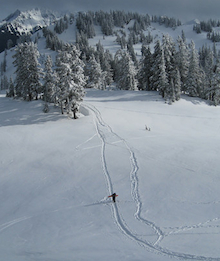
Hiking through the Mount Baker backcountry. Andy Bourne
Avalanche Gear
The AAI Equipment Shop rents avalanche gear, including beacons, probes, and shovels.
We have packs and ski poles available to rent as well.
WE HAVE SPLITBOARDS!
If you are a snowboarder and would like to venture into the backcountry, you can rent our boards and use your boots!
See AAI rental pricing sheet or contact our shop at 360-671-1570 for more information.
